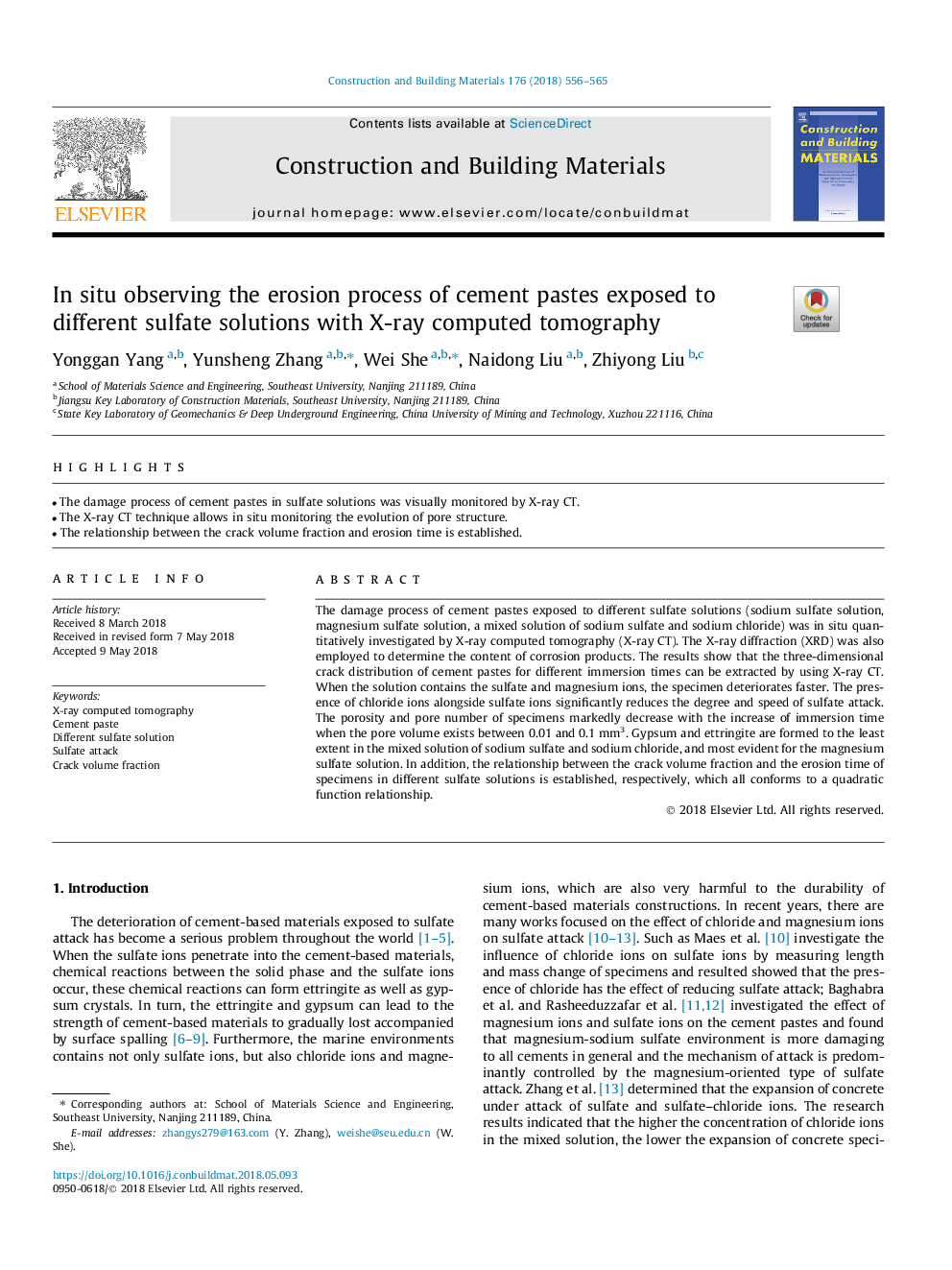| Article ID | Journal | Published Year | Pages | File Type |
|---|---|---|---|---|
| 6713227 | Construction and Building Materials | 2018 | 10 Pages |
Abstract
The damage process of cement pastes exposed to different sulfate solutions (sodium sulfate solution, magnesium sulfate solution, a mixed solution of sodium sulfate and sodium chloride) was in situ quantitatively investigated by X-ray computed tomography (X-ray CT). The X-ray diffraction (XRD) was also employed to determine the content of corrosion products. The results show that the three-dimensional crack distribution of cement pastes for different immersion times can be extracted by using X-ray CT. When the solution contains the sulfate and magnesium ions, the specimen deteriorates faster. The presence of chloride ions alongside sulfate ions significantly reduces the degree and speed of sulfate attack. The porosity and pore number of specimens markedly decrease with the increase of immersion time when the pore volume exists between 0.01 and 0.1â¯mm3. Gypsum and ettringite are formed to the least extent in the mixed solution of sodium sulfate and sodium chloride, and most evident for the magnesium sulfate solution. In addition, the relationship between the crack volume fraction and the erosion time of specimens in different sulfate solutions is established, respectively, which all conforms to a quadratic function relationship.
Related Topics
Physical Sciences and Engineering
Engineering
Civil and Structural Engineering
Authors
Yonggan Yang, Yunsheng Zhang, Wei She, Naidong Liu, Zhiyong Liu,
